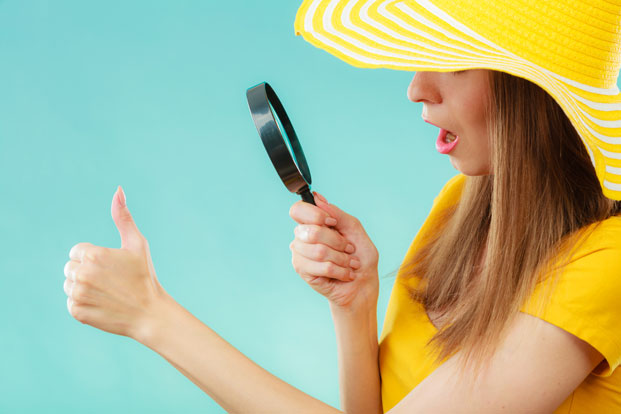Fingernails and toenails are tiny parts of the body, but their treatment is a big business in the United States. More than $1 billion in revenue is generated each year by the nail salon business in this country, with annual growth pegged at more than 2 percent for the overall hair and nail salon business.
It seems like a good practice to keep nails trimmed, polished and healthy. But there are hidden health hazards lurking in the nail salons, some apparent, some not so obvious. In this case, what you don’t know can kill you because there are some serious health and safety problems that can stem from manicure parlors that try to cut corners and use improperly trained staff.
Questions have emerged about the safety of certain acrylics used when affixing artificial nails to real ones and gel nail polish formulas. The chemicals that hold the artificial nail in place have been reported to cause allergic reactions and damage skin and real nails located underneath.
There are also concerns about certain chemicals. There is one particular concern with methyl methacrylate (MMA). The chemical is banned by United States government regulators as poisonous for humans, but the United Kingdom and other countries still use it, and some U.S. salons may import it and use it illegally.
Gel Polish Concerns
Methyl methacrylate isn’t the only chemical concern in United States salons. Both the Cancer Prevention Institute of California and the California Healthy Nail Salon Collaborative, a trade organization of salon owners, have issued studies on the dangers of common salon nail chemical uses.
Of the chemical studied, gel polish has raised some of the biggest red flags. One of the most-requested treatments in salons, gel polish offers the long-term wear of acrylic nails but is easier to remove and doesn’t produce the same underlying damage. The coating for gel polish is thinner than acrylics, dries faster and stays shiny without chipping for weeks. In a busy world, that time-saving treatment is highly attractive to busy working women.
Unfortunately, while a polish offers less damage than a nail affixed to another nail, the process uses many of the same chemicals. One of the larger concerns is acrylates, which bind to form the plastic protection of the nail covering. Some customers have reported severe reactions to the chemical on their skin, with reported burning, itching, contact dermatitis, blistering, scaling, eczema and hives caused by the use of acrylates. There is little training in the use of these volatile chemicals, posing a safety hazard to both customer and attendant.
Beyond that, concerns have been raised about gel polishes. The gel process uses pre-mixed acrylic gel applied to the natural nails. The nails are then “cured” under ultra-violet light. The process can be repeated several times to achieve a solid foundation, which increases the exposure to UV light, a human carcinogen that causes skin cancer. Repeated exposure only increases the risk.
While the exposure at nail salons is relatively low, some experts claim it is equivalent to that achieved by commercial tanning facilities, which have a high risk of skin cancer. But adding to the concerns over nail salons is that they mix the UV rays with the chemicals in nail polish, in effect creating a potentially toxic baking process. There have been no long-term studies about the effects of UV rays on these chemicals, raising some concerns about the entire process.
Finally, there are questions about how the nail salons treat people’s real nails. Manicures can produce skin punctures and irritations, and repeated nail treatments can leave nails vulnerable to chipping, cracking and skin peeling around the skin. That offers opportunities for bacterial infections. Removing any existing gel polish also requires immersing the hands in the acetone for 15 minutes or more. Acetone is a known carcinogen and can penetrate the skin.
Keep in mind that fingernails are repositories of germs, bacteria, dirt and debris. Everywhere you touch in the course of a week – toilet handles, doorknobs, keyboards – can transfer bacteria that lodges under the nail. Keeping that area clean is important, but it’s also wise to have the debris removed carefully, so as not to penetrate the skin and provide an avenue for an opportunistic infection to enter the body.
Transparency Is Key
People who enjoy salon pampering may ignore warnings about sketchy salons. That’s why it is important to watch for signs that the salon takes shortcuts because all of these issues can pose a potential threat to the patron’s health.
First, make sure that the salon isn’t using a lot of off-brands. Patrons should be able to examine the bottles of products that are being used to treat nails. It is important to make sure that they are well-recognized brand names and not cheap containers with no markings.
Check out the cleanliness of the nail salon. If the floor is filthy, it may be a sign that the operation isn’t concerned about health and safety as much as making a profit. The professionalism of those treating the customers is also a sign. If the salon offers huge discounts, it may be because they are cutting corners to achieve the price breaks.
Make sure that artificial nails are carefully removed so that the real nail underneath is not damaged extensively. If care isn’t taken, cracks and thinning are a possibility. Aggressive cuticle trimming is also a bad sign, indicative of a shop that cares more about time issues than customer sensitivity.
Professional nail salons will take great care to sanitize all of its utensils used to work on customers. They will also offer sunscreen if UV rays are used in a process.
Getting a nail treatment is a time-honored tradition and usually an enjoyable one. But keep in mind that the business is growing, and many businesses will cut corners in the fierce competition. That can have consequences for the patron’s well-being, so make sure that the treatments being offered are first class and professional.

Leave a Reply